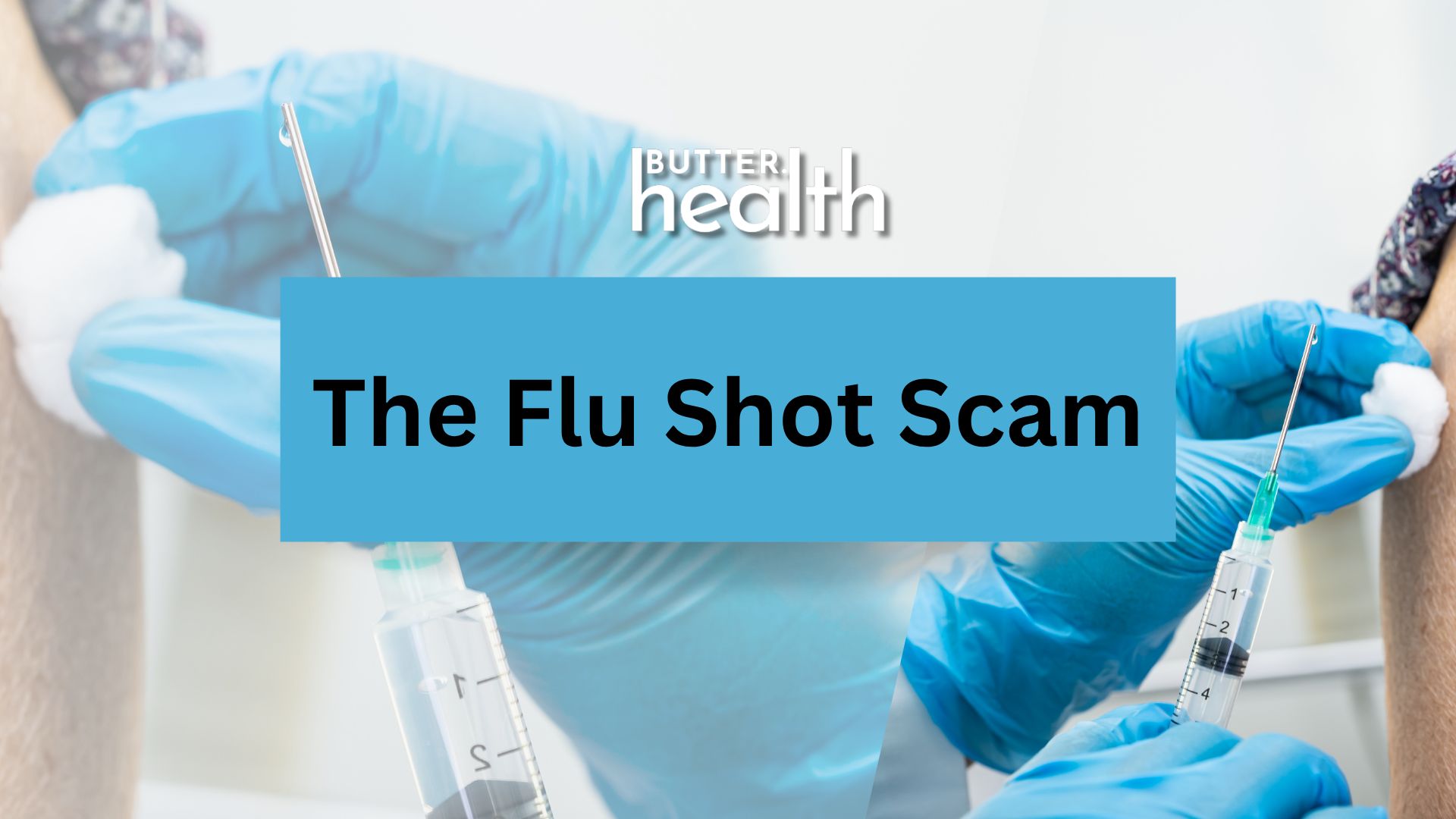- Butter Health
- Posts
- The Flu Shot Scam
The Flu Shot Scam
How an $8-billion industry sells protection that rarely delivers.

Every fall, the same campaign returns: “Get your flu shot!” Pharmacies dangle coupons, workplaces host vaccine days, and health officials promise protection. But year after year, the numbers tell a different story—one hidden in plain sight on the CDC’s own website.
The Effectiveness Problem
According to CDC data, the flu shot’s effectiveness has averaged 40–60 percent in “good” years and as low as 16 percent in others. That means most people who receive it can still get sick.
Why? Because the vaccine is reformulated months before flu season begins, based on predictions about which strains might circulate. If those guesses miss the mark (as they often do), protection plummets.
Even the CDC acknowledges that “vaccine effectiveness can vary from season to season.” Translation: it’s a best guess, not a guarantee.
What’s Actually in the Syringe
Flu vaccines are typically grown in chicken eggs and contain:
Thimerosal (a mercury-based preservative)
Formaldehyde (used to inactivate viruses)
Aluminum salts (to enhance immune response)
Egg protein (which can trigger allergic reactions)
We’re told each compound is considered “safe in small quantities,” but the list itself raises fair questions about why a supposedly routine shot looks more like a chemistry set than natural immunity. Christians are called to discern what we put into the temple of the Holy Spirit (1 Corinthians 6:19–20). Stewardship means asking hard questions.
The Business of “Prevention”
The global flu vaccine market was estimated to be worth $7.91 billion in 2023. Major manufacturers—GSK, Sanofi Pasteur, Pfizer, and CSL Seqirus—sign government contracts that guarantee sales whether the shot works well or not.
Public agencies promote these products while regulators grant legal immunity under the PREP Act. That means the system profits regardless of outcomes.
It’s difficult to find another product in healthcare with that level of protection from both market risk and liability.
Side Effects People Actually Feel
Many report post-shot fatigue, headache, or mild fever—the body’s inflammatory response to the immune challenge. The CDC calls these “common and temporary,” but for some, the experience is indistinguishable from the illness they were hoping to avoid.
The Vaccine Adverse Event Reporting System (VAERS) records thousands of reactions each year. While most are minor and causation isn’t always clear, the data show that the experience of feeling unwell afterward is widespread, not rare.
The Natural Immunity Question
Our immune system was designed to adapt. When we encounter and recover from viral infections, we develop broad, durable defenses. Some research even suggests repeated annual vaccination may narrow that adaptability over time—a phenomenon scientists are still studying.
In short, the body learns best through exposure and recovery, not constant chemical rehearsal.
The Bigger Picture
So, who truly benefits from the yearly ritual?
The pharmaceutical companies, obviously.
The public, perhaps, somewhat, in specific populations.
But the data show the flu shot is far from a universal shield.
Maybe the real epidemic isn’t the flu itself, but our dependence on quick fixes that promise health without addressing the root cause: metabolic resilience, nutrient sufficiency, rest, and obedience to God’s natural design.
When we steward the body the way it was created to function—through nourishment, sunlight, movement, and sleep—we strengthen the immune system far more effectively than a seasonal injection ever could.
If the numbers are uncertain, the ingredients questionable, and the profits guaranteed, it’s worth pausing to ask whether this intervention is right for you and your health.
Need help discerning the truth in this fallen world? Schedule a complimentary discovery call with me today.
Reply